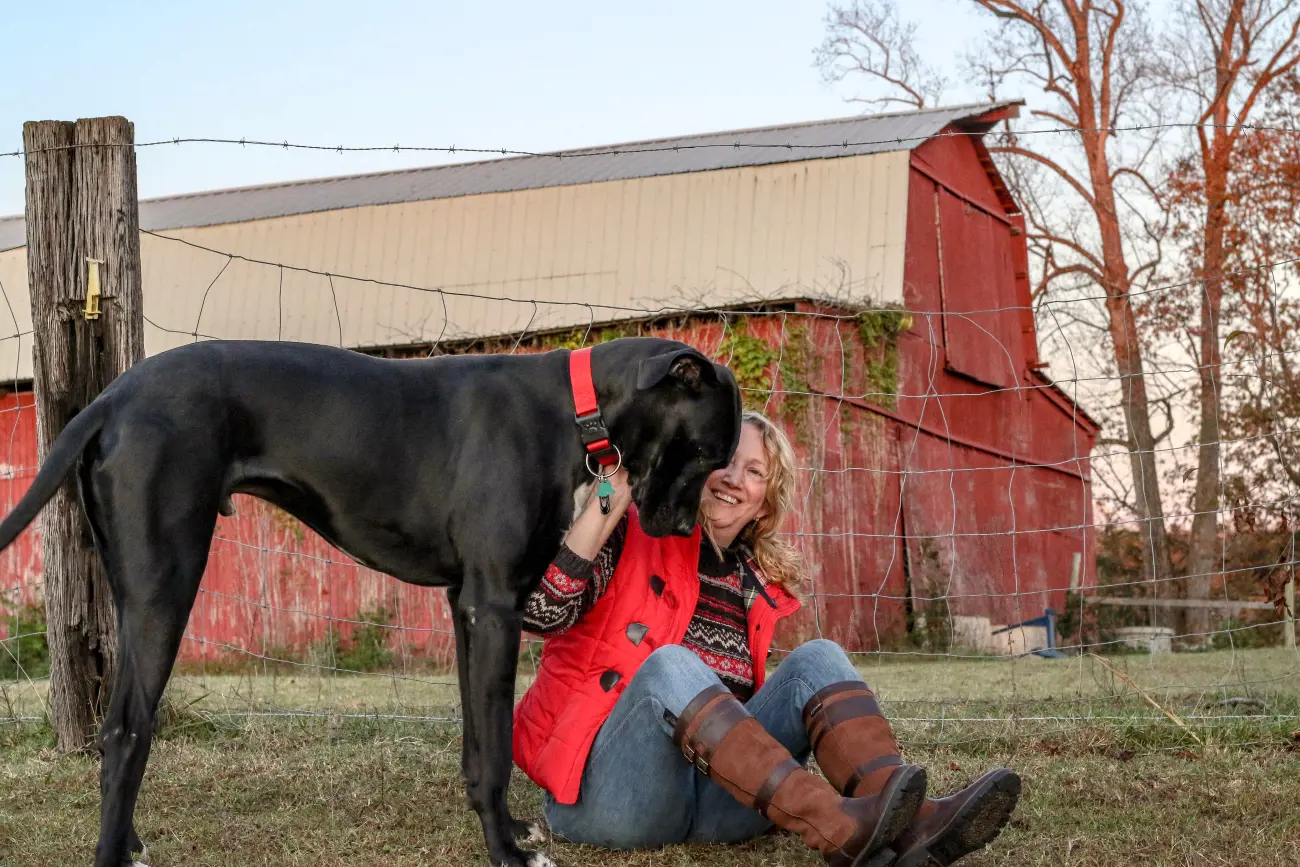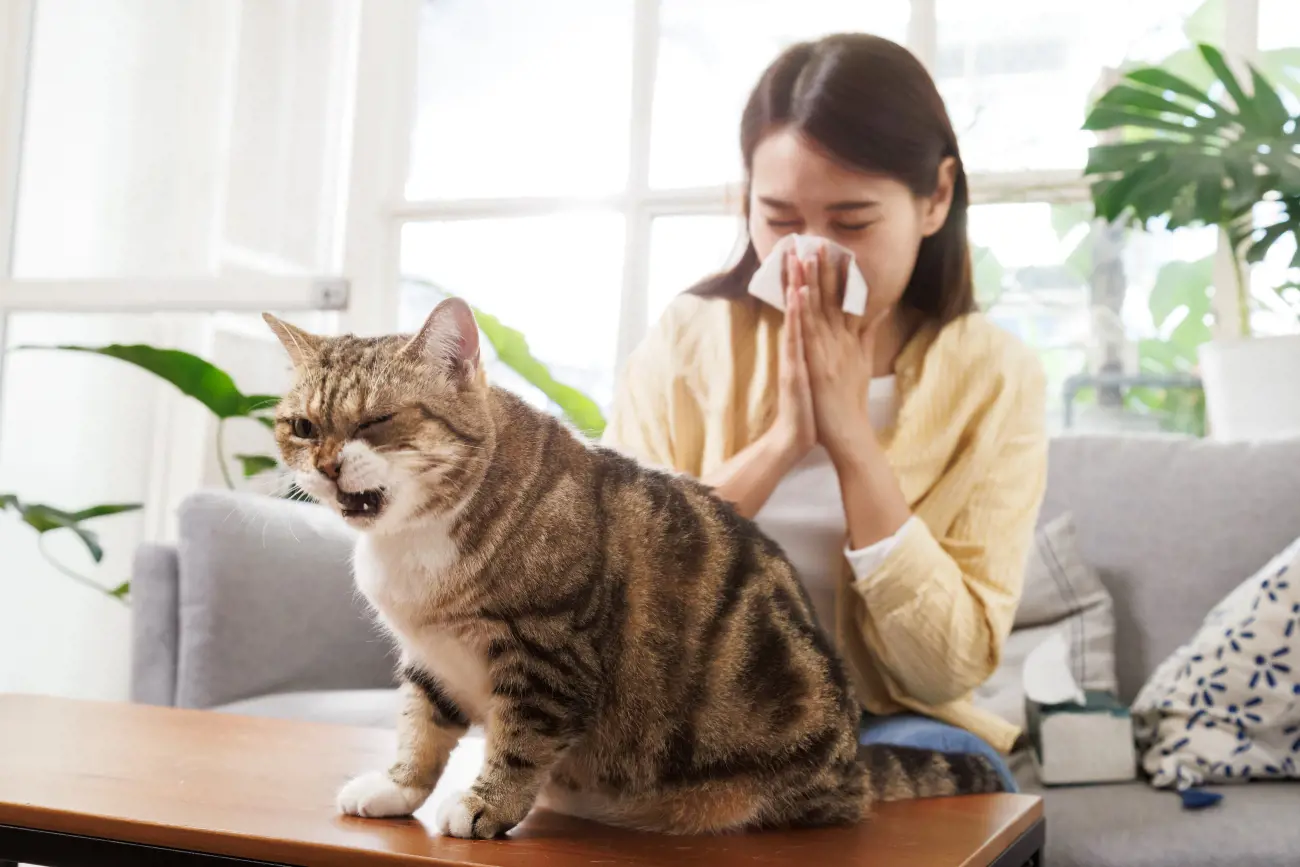What is pancytopenia in cats?
25th November, 2021

There has been a sudden increase in feline pancytopenia in recent months, prompting a recall of cat food. Hundreds of cats are believed to have died from the mysterious illness.
Commenting on the outbreak of cases, a spokesperson for the Royal Veterinary College (RVC) said: "Currently, we are sadly aware of over 500 affected cats. Investigations into an underlying cause do not suggest a link with common feline infectious diseases, common toxins (e.g., heavy metals, oestrogen) or deficiencies/excesses in vitamins or minerals.
"Results of analyses by the RVC of cat food involved in the product recall published by the Food Standards Agency (FSA) have been shared with the FSA."
The findings from the RVC resulted in certain cat foods manufactured by Fold Hill Foods being recalled, with cat owners told: “Do not feed your cat any more of this food.”
However, the FSA has since been unable to establish a causative link between the outbreak and the products made by Fold Hill Foods. Further investigations are ongoing at the time of writing, but it’s unclear whether any conclusions will be able to be drawn.

Healthy cats ‘going rapidly downhill’
The BBC spoke to cat owners who had been affected by the pancytopenia outbreak. Steven Barrett's nine-year-old cat Freyja was one of the pets who sadly died from suspected pancytopenia.
Steven tells how Freyja was fed from a 7.5kg bag of Applaws Chicken dry cat food. He was unaware that the food had been recalled until he tried to order another bag – by this time, Freyja had been ill for six days.
As soon as he found out about the recall and the possible link to pancytopenia, he took his cat to the vets. In the next few days, she went rapidly downhill, and all the vets could do was provide palliative care.
Freyja suffered organ failure caused by suspected pancytopenia. "It feels like we've lost a family member," Steven said.
The mortality rate for a cat with pancytopenia is frighteningly high. Of the 528 known cases examined by the RVC, 335 of those cats ended up dying – giving it a 63% mortality at the time of reporting.
However, it’s thought that the number of cases could have well exceeded 500, with only a small percentage of UK vets submitting their findings to the RVC.
To underline the seriousness of the outbreak, the RVC usually sees one case of pancytopenia per year.
No known cause of the outbreak
As a precautionary measure, three brands of hypoallergenic dry cat food produced by Fold Hill Foods were recalled and owners advised not to feed their cats the food which was under investigation.
The FSA noted that Fold Hill Foods “co-operated fully” with their investigation, which uncovered that there were “higher levels of mycotoxins in some samples of the recalled cat food”. These products, which included specific compounds known as T2 and HT2, are no longer on sale.
However, the FSA was still not convinced enough to attribute the food as a cause of the outbreak of pancytopenia. It noted that mycotoxins are often found in some types of feed and food and despite the higher levels found in some samples, couldn’t be ruled as a definite cause.
Fold Hill Foods has since resumed production.
But, where does this leave cat owners worried about pancytopenia?
The FSA reassured pet owners that it is taking a “multi-agency approach” to try to identify the causes of the illness.
It acknowledged how many cat owners have had to deal with unexpected grief in recent months – but it could not provide any real advice on what steps to take to ensure their cats don’t end up picking up pancytopenia in the future.
In an attempt to calm cat owners concerned about mycotoxins, the FSA said: “Mycotoxins are naturally occurring substances produced by certain types of moulds (fungi) which can grow on a variety of different crops and feedstuffs.”
Pets at Home spoke on behalf of cat owners saying it was “deeply disappointed” that the FSA was unable to come to any conclusions, adding that their “hearts go out to all the families whose cats have suffered”.
The retailer is intent on helping improve the knowledge within the area of feline pancytopenia and has committed £100,000 to fund further studies.
What do we know about pancytopenia?
As animal charity Blue Cross explains, pancytopenia means that your cat has a very low red and white blood cell count. As you might imagine, these cells play a crucial part in keeping a cat fit and healthy, with low levels often leading to serious conditions like anaemia and infection.
As we’ve seen, pancytopenia is often fatal for cats, so you need to have an awareness of what it’s all about – from the early symptoms to the more serious signs – so you can act quickly and give your cat the best chance of survival. Pet insurance can be crucial to a swift response, as you’re not thinking about the financial implications of getting your cat treated.

What are the symptoms?
Pancytopenia typically affects your cat like many other conditions in the first few days, with symptoms including tiredness, restlessness, a lack of appetite and pale gums. Some cats don’t even show any early symptoms.
However, as pancytopenia begins to take hold, it can lead to all kinds of worrying developments including blood in their mouth, black and bloody poo, blood in their urine and vomit containing blood. As your cat’s levels drop, they might even collapse – a sight no cat owner wants to see.
If you have any reason to believe that your cat might be feeling under the weather, you should contact your vet straight away.
To diagnose pancytopenia, your vet will take a blood sample from your feline to look at their blood cell count.
If their levels are lower than they should be, your vet will want to investigate further to come up with an accurate diagnosis. They may take a urine sample, conduct a body scan of your cat, or extract a bone marrow biopsy. These kinds of tests aren’t cheap to undertake, so you need to make sure you’ve got cat insurance which will help cover the costs.
What causes this illness?
It’s your cat’s bone marrow which produces their white and red blood cells. If something affects the functioning of your pet's bone marrow, it can stop it working properly. This means that the number of blood cells in your pet’s body drops, causing pancytopenia.
As we’ve seen with the recent influx of pancytopenia cases, it’s not always possible for vets to put their finger on exactly what has caused a cat’s blood levels to be disrupted.
However, a vet will look at a number of possible causes including:
-
toxins
-
diseases such as feline AIDS (FIV) and feline leukaemia (FeLV)
-
sepsis
-
blood cancer
-
bone cancer
-
immune system disorders
What’s the treatment?
Treating pancytopenia can be difficult – especially if no cause can be identified. Sometimes, all a vet can do is provide supportive care which usually involves them going into intensive care to keep a close eye on them.
If a cause for your cat's pancytopenia can be identified, a vet will turn to one of three care options in an attempt to nurse them out of the danger zone:
-
blood transfusions
-
antibiotics
-
granulocyte colony stimulating factor: an attempt to make the bone marrow produce more white blood cells
Treatment options will depend on whether or not your cat’s pancytopenia has been identified early or late – the longer your cat goes without any treatment, the worse the prognosis can be. It can sometimes prove too late to replenish the lost blood cells.
Unfortunately, some cats suffering from pancytopenia won’t make it out the other side.

How to spot cancer in cats
As we’ve seen, pancytopenia and cancer sometimes go hand in hand. Cancer of the white blood cells – otherwise known as lymphoma – is one of the most common types of cancer found in cats.
As per a study by the RVC, male cats are 1.7 times more likely to get lymphoma than female cats. Meanwhile, older cats over the age of 11 are five times more likely to get lymphoma than younger cats aged between two and five years old.
So, if you have an older male cat, you should be on the lookout for signs of lymphoma and other cancers. Our quick guide tells you how to spot the tell-tale signs.
Another interesting finding from the RVC study was that felines covered by cat insurance were over three times more likely to be diagnosed with lymphoma than uninsured cats. It just goes to show, insured pet owners don’t have to worry about cost implications of getting their cat treated like their uninsured peers. And as we know, early diagnosis of things like pancytopenia and lymphoma is crucial for giving cats the best chance of survival.
Symptoms of cancer
It’s not always easy to spot the early signs of illness in cats. After all, they are masters at hiding if they’re hurt or in pain. It’s not uncommon for a cat to want to take themselves away from the world and hide somewhere for a bit when they’re feeling well, let alone when they are under the weather.
But as pet owners, we can usually spot changes in their eating habits, mood, behaviour or levels of physical activity – as long as we don’t just put it down to a cat’s innate temperamental nature.
Perhaps they’re not going out as much as they used to, or are snoozing much more than usual. Rejecting food and being unusually tired are also signs that things aren’t quite right with your cat.
As Purina points out, cancer symptoms in cats aren’t too dissimilar to the clinical signs they show when they have other non-cancerous conditions, so it’s crucial that you get advice from a professional to rule out other problems.
The symptoms to be on the lookout for include:
-
Not eating and problems with chewing
-
Increased drinking
-
Losing weight
-
Being sick or having diarrhoea
-
Limping or stiffness when walking
-
Laboured breathing or lack of stamina
-
Sores that don’t seem to heal
-
Bleeding or discharge
-
New lumps, bumps or lesions
A new lump or bump on your cat is often the tell-tale sign of cancer – but it could just as easily be a benign (non-cancerous) lump that’s just an overgrowth of harmless cells, so try not to panic. However, malignant (cancerous) can spread quickly, so don’t sit on the problem or put your head in the sand.
Sometimes a cat will not show any cancer symptoms until it’s too late. That’s why regular vet check-ups are so important to ensuring your cat stays fighting fit. If you’re a Purely Pets policyholder, you can also call our 24-Hour Vet Helpline if you need advice about anything to do with your cat’s health.
Diagnosing cancer is by no means straightforward. Your vet will want to conduct thorough tests before coming up with a diagnosis.
Cat insurance can help cover the costs of these kinds of investigative procedures – the quicker you get a firm diagnosis, the quicker you’ll be able to get your cat the care they need.
Cat insurance cover from the specialists
Feline insurance helps carry the financial burden that comes with emergency treatment or medication when your pet gets ill. Purely Pets makes it easy to find the right type of cover for your beloved cat, with 15 levels of lifetime cover to choose from up to £15,000.
If you suspect your cat may be showing signs of pancytopenia, cancer or any illness, you can call the 24-Hour Vet Helpline for advice, which is manned by trained veterinary professionals.
Dealing with an ill pet can be a stressful time. That’s why we make managing your policy and making claims as easy as possible.
Get a quote for cat insurance at Purely Pets today.
Helpful Pages
Recent Posts

Why do Great Danes bury their heads?
12/03/25
Find out more about Beagles
28/02/25Pet Insurance Quote
- 98% claims paid *
- Claims paid directly to vets
- 24/7 vet video consultations
- Interest free monthly payments


